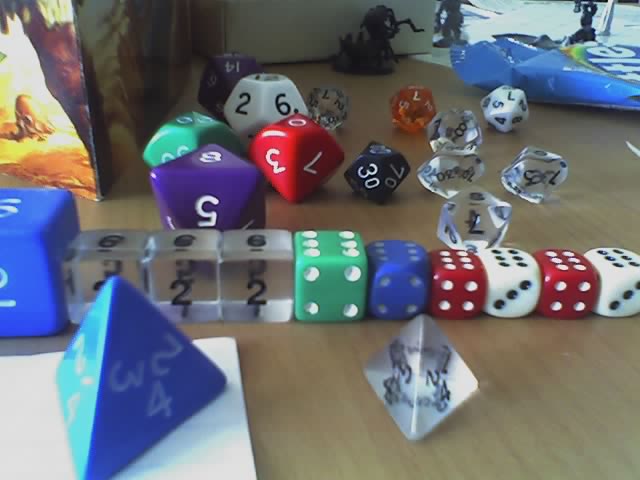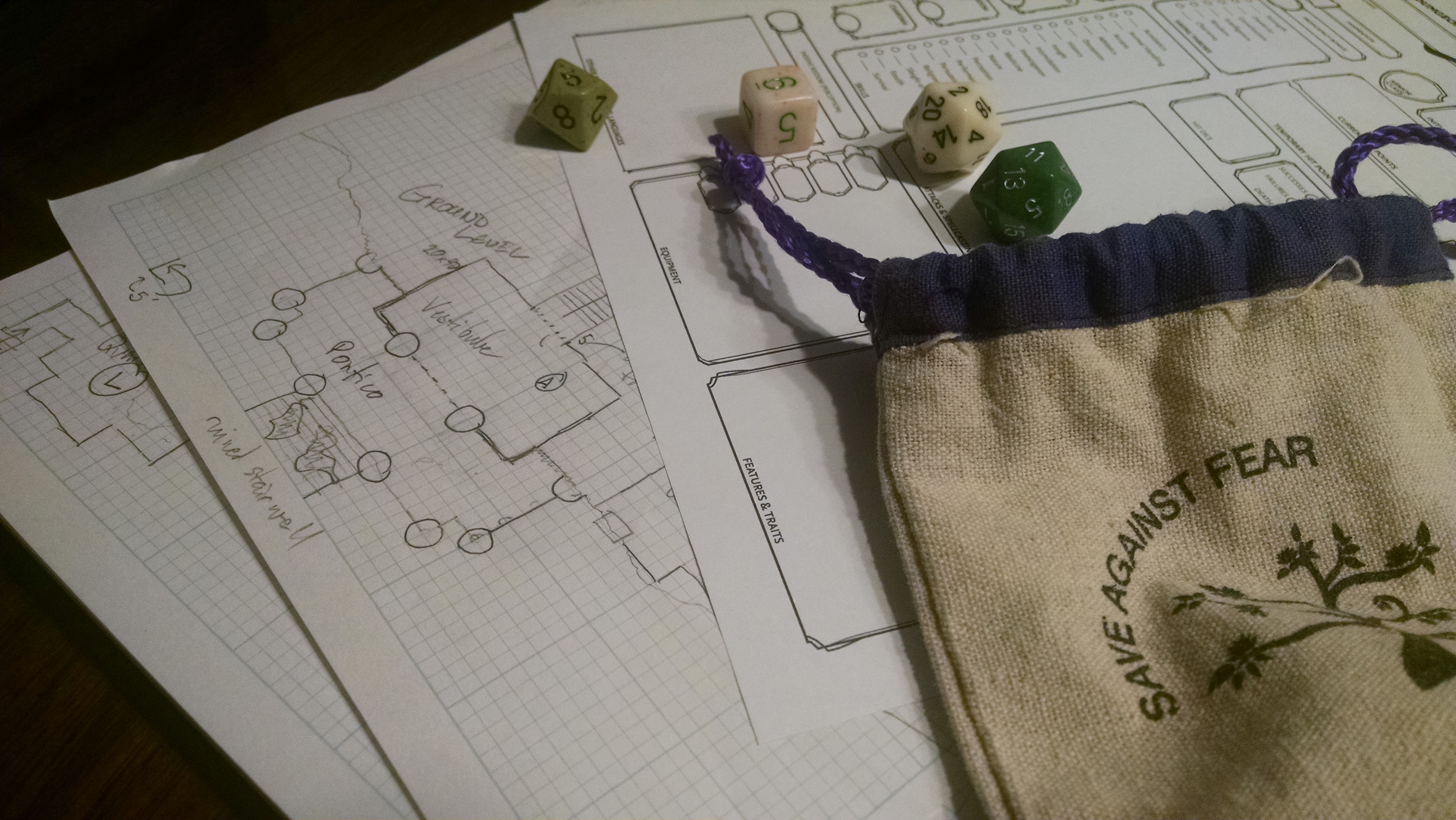A list of all of the posts in this series can be found here.
Wellsprings of Power
One of the biggest challenges in designing a setting that’s explicitly monotheistic rather than a dualistic setting or one with a pantheon for a system like D&D 5e is “how do you explain everybody’s class abilities?” The problem is especially thorny if you want to leave most or all of the character options on the table; 5e is packed to the gills with character options that rely on a variety of different things.
At the base, at least by my reading, a setting for 5e that’s going to use the full spectrum of character options has to explain the following:
- Where do good clerics and paladins get their spells from?
- Where do evil clerics and paladins get their spells from?
- Where do nature-oriented spellcasters like druids and rangers get their spells from?
- Where do arcane spellcasters like wizards, bards, and sorcerers get their spells from?
- Where do warlocks get their pacts from?
- What is the origin of angelic beings?
- What is the origin of fiends?
- What is the origin of aberrations?
- What is the origin of undead?
Primeval Antiquity
I don’t have a super-detailed creation story just yet, but here are the broad strokes. God, the Creator is the ultimate source of everything and is a loving, benevolent, merciful God as we in Christianity understand God to be. Because the world isn’t Earth, there are some different assumptions in the creation story, however.
In the beginning, God created the heavens and the earth. The earth was without form and void, and darkness was over the face of the deep. And the Spirit of God was hovering over the face of the waters. -Genesis 1:1-2 (ESV)
The very initial part of creation maps pretty closely to the earliest parts of Genesis: first there was Nothing, God decided there should be Something and set about creating it. And for a long time (hard to say how long because time itself hadn’t been implemented yet) God was the only life and the only intelligence in all of Creation.
The first thinking beings created were the angels. Initially, they functioned as a sort of divine administrative staff, overseeing different aspects of creation. Though free willed, they were in the direct presence of God and worked with God in the later stages of creation. This was the point in the story where magic entered the picture – God provided power above the natural laws to aid in the building and maintenance of creation to the angels. Think of magic as the source code of reality or the factory and tools used to build and maintain it.
The second batch of intelligent created beings were the fey. They were a creation of a bunch of the higher orders of angels and were tied to the natural world. They were less powerful and wilder than the angels, but ultimately good as well. Inspired by their own creation, they made their own realm, a land of vibrant natural beauty known as The Feywild.
The next group to be created were the mighty dragons, a joint project of angels and the fey.
Finally, God created the mortal races and gave them free will as well, desiring the companionship of those who had a choice in the matter.
God and the angels deliberately left the clues necessary to work a limited form of magic in the world – this was known as “mortal magic” and is still in the world during the setting’s present – it is the magic practiced by wizards, sorcerers, bards, and other arcane spellcasters.
And everything hummed along beautifully for a while until one of the angels, now known as The Adversary, got a little too full of himself.
A Wrench in the Gears
The exact identity and responsibilities of the monstrous being of pure evil now known as The Adversary prior to his fall are known only to God and his former angelic contemporaries, but at some point, one of the first and most powerful angels rebelled and was cast down from heaven. As he fell, he and his co-conspirators were warped by their evil into the first fiends. The raw supernatural release also formed a twisted inverse of Heaven – a nightmarish plane of suffering and torment known as Hell. Sealed off from Heaven, the fiends turned Hell into a base of operations and set about trying to corrupt mortals, dragons, and fey alike. They achieved some measure of success. The fey split into two courts, one devoted to God and one to The Adversary and mortals, tempted by power, also fell victim to corruption. Some of the dragons became corrupted as well, their beautiful metallic scales fading to colored ones.
Some of The Fallen tried to create their own, new fey, but this failed disastrously. Later attempts to create new dragons had similarly-disastrous results. Instead of the wild, natural beings that existed in harmony with creation, the new beings were unnatural, twisted creatures of pure madness – the first Aberrations. The first of these beings created their own strange realms of madness and horror and retreated to them, emerging only occasionally, but always with malign effect.
And things were really ugly for a while. The mortals were pulled into the savage, multi-sided conflict and with only stone-to-bronze-age technology to work with and very little healing magic available to arcane casters, casualties were horrific for mortals. It was around this time that God anointed the first mortal clerics. Allowed to channel the pure, restorative, redemptive power given to them by God, they healed the wounded and sick, carried light into darkness and fought valiantly against evil.
The Adversary, desperate to keep up, created his own sinister copies, but while they were still effective, they lacked the restorative power of good clerics. (The specific differences will be explained in a later post.) Their disastrous attempts to replicate the life-restoring magic of the good clerics created the first undead, horrible perversions of once-living beings.
The fey, desiring to aid their respective sides in the conflict, empowered the first druids. Members of all factions started creating special mortal agents, giving rise to the first warlocks. (Certain very powerful beings, namely Archangels, Archfiends, Fey Lords and Elder Things in addition to the odd ancient undead or dragon are like pitchers of magical energy filling up from the bottom. At some point, they can’t hold any more, but they can give the overflow to someone else to use.)
Various orders of clerics and druids began to train more martial warriors, giving rise to paladins and rangers, respectively. The Church and its holy orders began to specialize in different types of holy power, and The Adversary’s cults began to do the same, albeit still as a shadow of the true clerics of God.
And a sort of equilibrium settled onto the world. Magic settled into predictable patterns and technology began to advance. Empires and nation states rose and fell. Prophets and kings contended with maledictors and tyrants for the collective soul of the mortal realm. Ages have passed, with their own history and events, but magic and its sources have stayed constant for untold millennia.
And that is where the setting the PCs will enter sits.
Playlist:
This Means War! by Petra




5 thoughts on “Setting Design Report, Part 12: Cosmology, Part 1: Sources of Magic”
I’ve designed my monotheistic world as the result of an accident resulting from research into wormhole technology. It created a rift between universes/dimensions that allowed in exotic particles and turned a star ‘arcane’. The resultant arcane field is the source of magic (and killed all technology). In the cataclysm that followed some creatures were transformed into godlike beings, but the good ones reject divinity and act as kind of patron saints, channeling arcane energy in a specific way to create divine magic. So while the immortals are the source of clerical power, clerics worship the Creator God.
That also sounds pretty cool! I actually toyed with the idea that clerics would get the bulk of their spells from God and their domain powers from an archangel (taking a bit of inspiration from the In Nomine RPG). However, I wanted there to be clerics that were part of the greater church and not a specific holy order, so I ultimately went with what you saw.
I like the kind of sci-fi touch on your setting, too. That’s also got some really interesting potential. (And could be disastrous for any spacefaring parties that travel through the star’s system!)
I like this take on a creation story – one that has to account for D&D stuff and benevolent monotheism both. This is well done, and makes internal sense. I always wonder about The Adversary, but that’s a bigger question :)
Wonder how or about what, specifically? If you’ve got some specific questions, maybe I can try to answer them in a future installment?